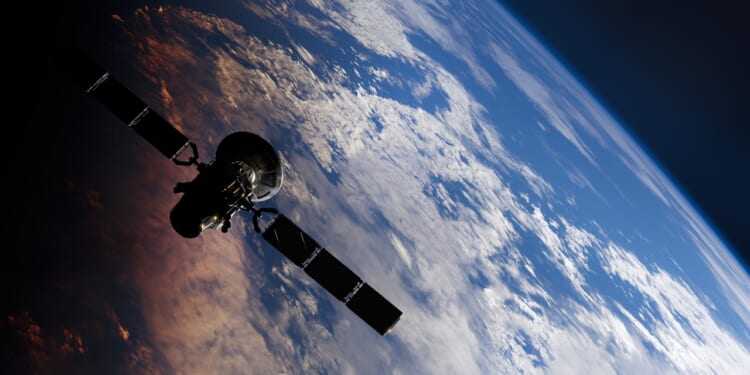Spain’s NG-II satellite reinforces Airbus’ role in the European Union’s secure communications satellites, as well as the role of the European Space Agency in fostering domestically-developed advanced payloads.
Europe continues trying to compete in the new contested domain of space. Airbus Defense launched the SpainSat NG-II from Cape Canaveral, Fla., on behalf of the Spanish Ministry of Defense. The satellite is the second of a two-satellite constellation (NG standing for “Next Generation”) for secure communications, and its successful launch completes the program.
The first satellite of the series was launched in January of this year. NG-II will join it in orbit. Both satellites are expected to begin servicing not just Spain, but the entirety of Europe—indeed, NATO—by the spring of 2026.
Understanding Spain’s NG-II Satellite System
The Spanish satellite was built on Airbus’ Eurostar Neo platform. It features a payload consisting of an advanced X-band active antenna array that can adapt its coverage up to 1,000 times per second. The antenna system has the capability to detect, geolocate, and counter jamming, and it is shielded against nuclear electromagnetic pulses (EMPs) in orbit.
The payload—which makes up about half of the satellite—was designed and manufactured in Spain’s space industry, under the lead of Airbus, with support from the European Space Agency (ESA) via the ARTES program and the Pacis Three partnership.
Hailed as Spain’s most ambitious space project to date, the satellite constellation will deliver the most advanced government communications system in Europe. And it couldn’t come at a better time, considering how the geopolitical situation in Europe has deteriorated—and how aggressive the Russians have gotten toward NATO assets in space. According to the Spanish government, the new satellite constellation will provide sovereignty and strategic autonomy for Spain and its allies in secure satellite communications.
Getting these two birds into orbit are just the first steps toward operationalizing this important system. Integration, testing, and validation were done at Airbus facilities in Toulouse, France.
After that, the satellite was shipped to Florida in September. With the launch now completed, the spacecraft will enter orbit and join its twin. Once operational in 2026, the Spanish and their NATO partners will have secure communications for the next decade—a key element for modern warfare.
The NG-II Satellite Is Exactly What NATO Needs
Spain put much effort into designing these two satellites. They are, according to Madrid, resistant to most known forms of electronic warfare (EW). These birds have anti-jamming technology and are electromagnetic pulse (EMP) weapon resistant. Spain is clearly studying the growing threat that Russian counter-space weapons pose to their military operations and the operations of their NATO partners.
Madrid’s investment into this system is in keeping with Europe’s overall commitment to indigenizing their own military capabilities. It should be viewed as being part of the continent’s overall commitment to funding its own rearmament. What’s more, this system reinforces Airbus’ role in the European Union’s secure communications satellites, as well as the role of the ESA in fostering domestically-developed advanced payloads.
If Europe is sincere about indigenizing its defense capabilities, the logical next step will be to cut the Americans out of the process altogether by launching the satellites from a European facility—most likely the Guiana Space Center in French Guiana. For now, though, the Americans are more than capable of providing the launch assistance for this important satellite constellation.
About the Author: Brandon J. Weichert
Brandon J. Weichert is a senior national security editor at The National Interest. Recently, Weichert became the host of The National Security Hour on America Outloud News and iHeartRadio, where he discusses national security policy every Wednesday at 8pm Eastern. He is also a contributor at Popular Mechanics and has consulted regularly with various government institutions and private organizations on geopolitical issues. Weichert’s writings have appeared in multiple publications, including The Washington Times, National Review, The American Spectator, MSN, The Asia Times, and others. His books include Winning Space: How America Remains a Superpower, Biohacked: China’s Race to Control Life, and The Shadow War: Iran’s Quest for Supremacy. His newest book, A Disaster of Our Own Making: How the West Lost Ukraine is available for purchase wherever books are sold. He can be followed via Twitter @WeTheBrandon.
Image: Shutterstock / Mikael Damkier.

















